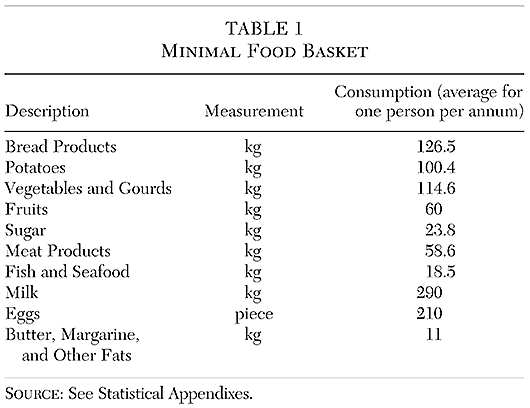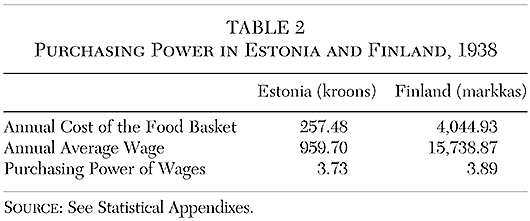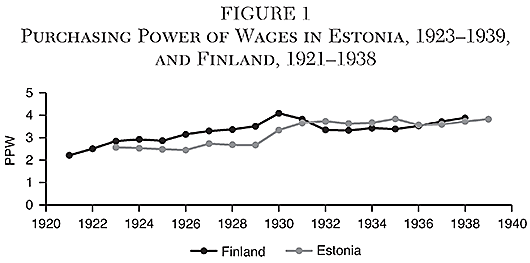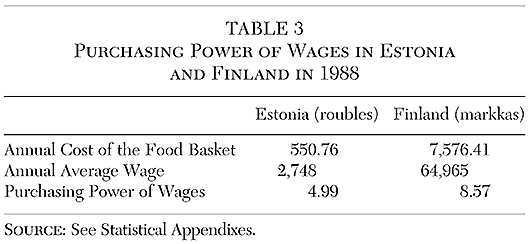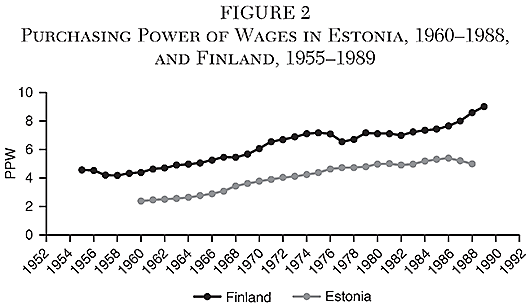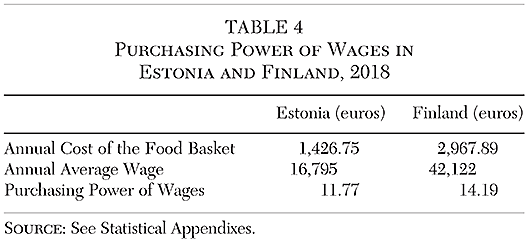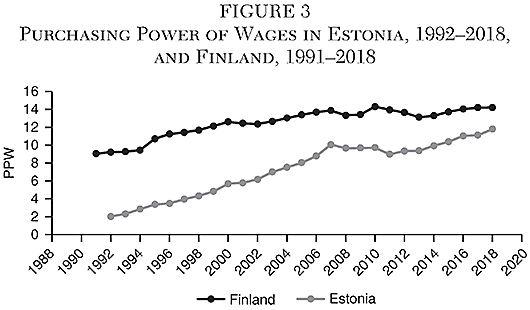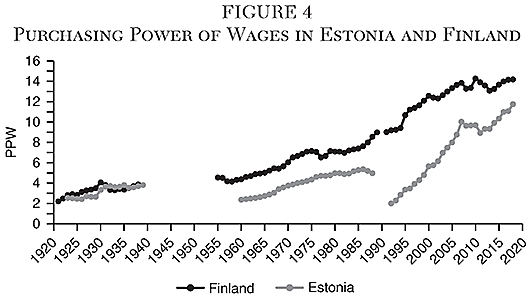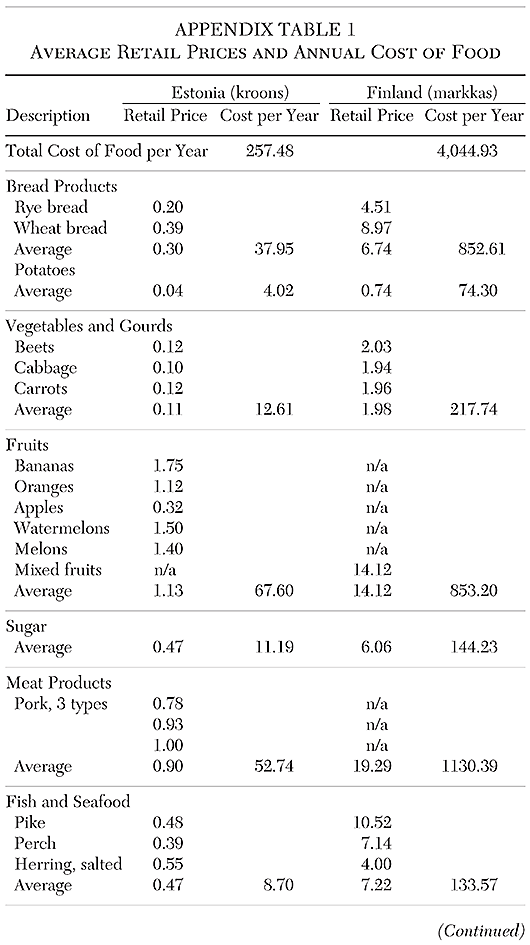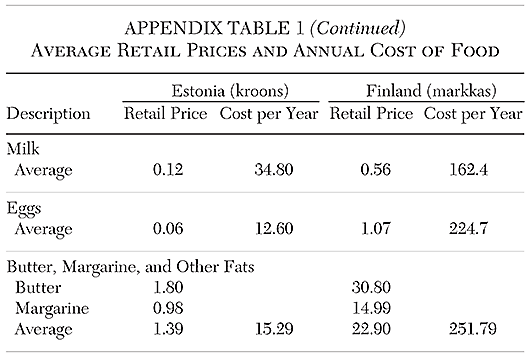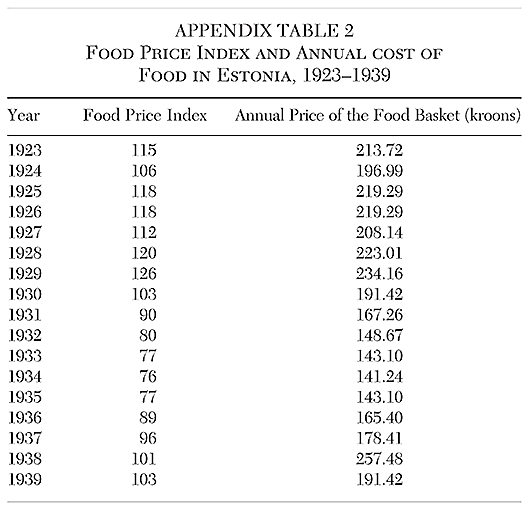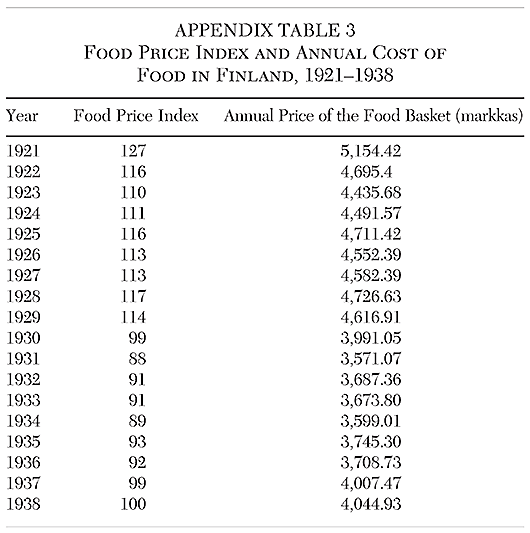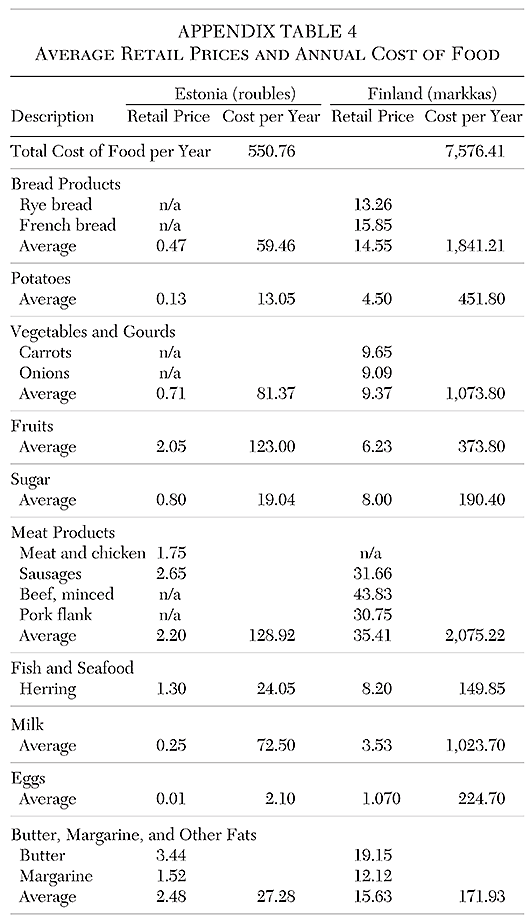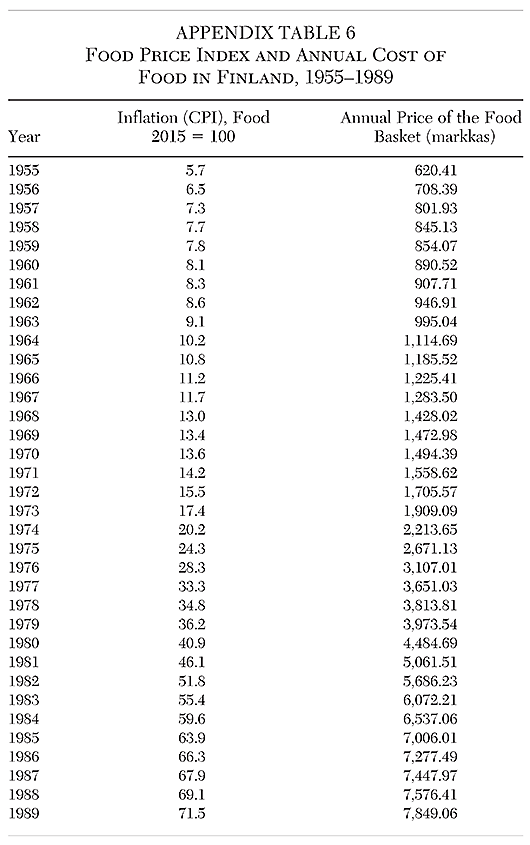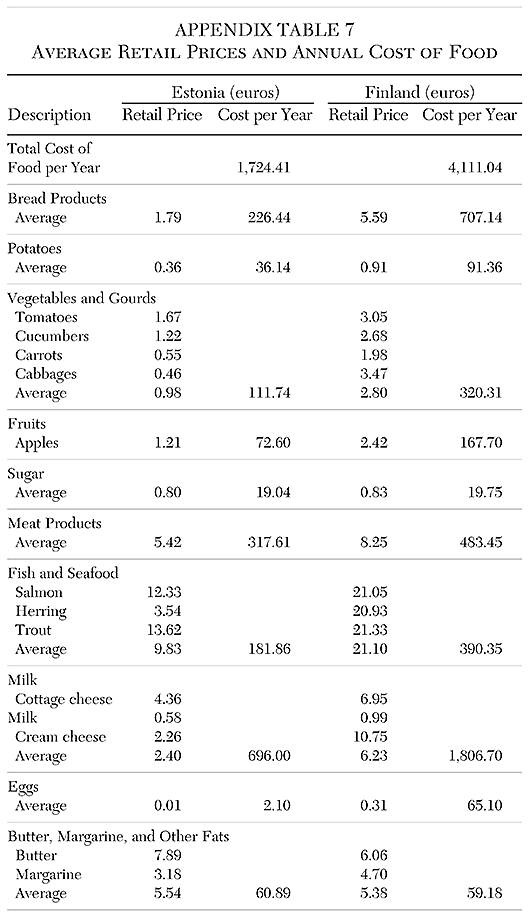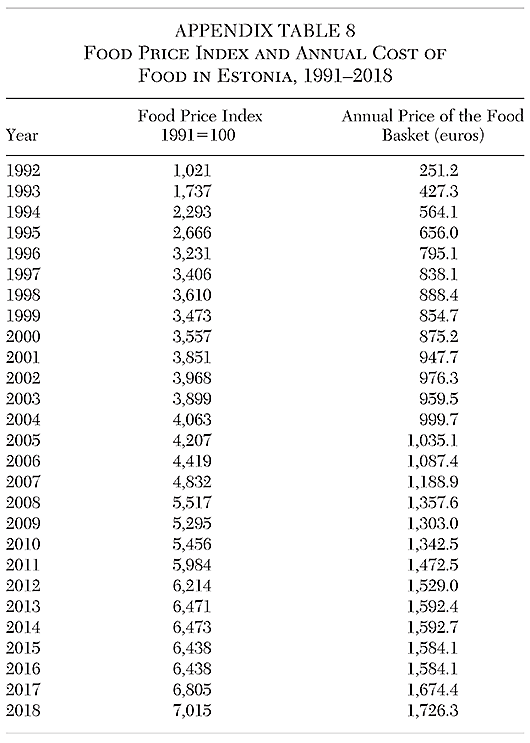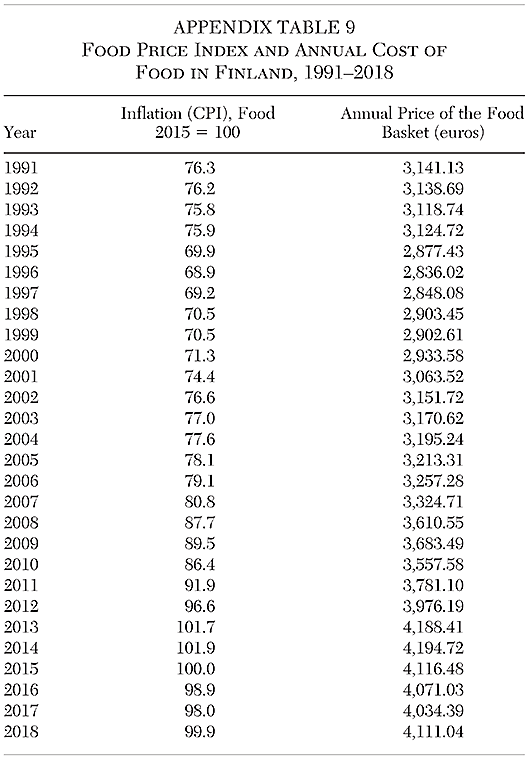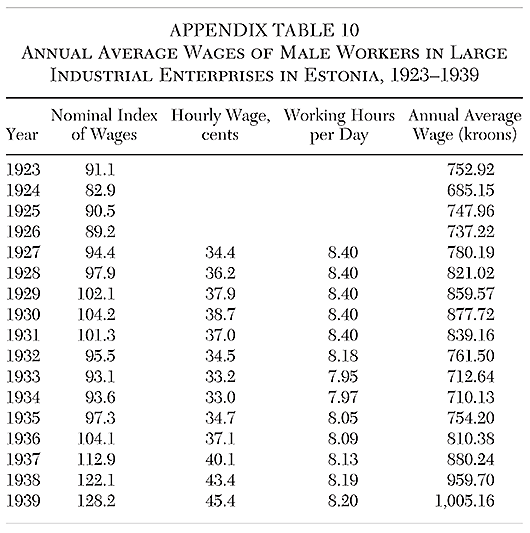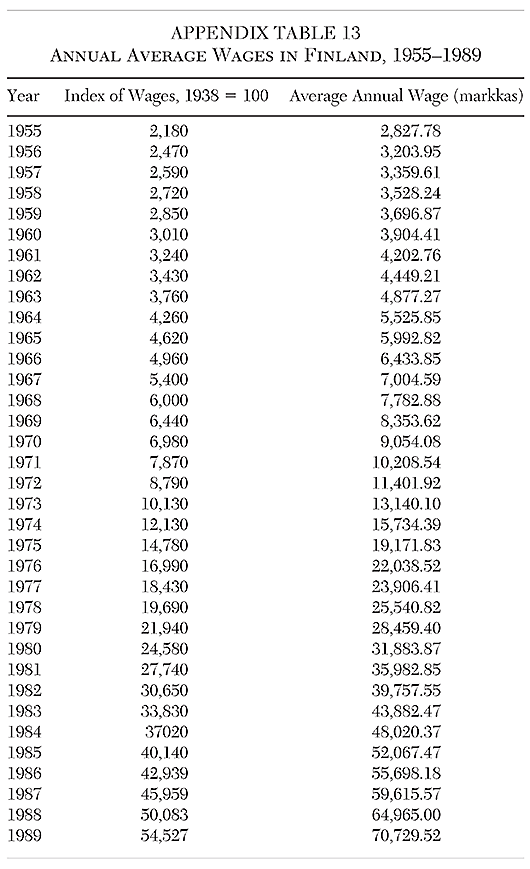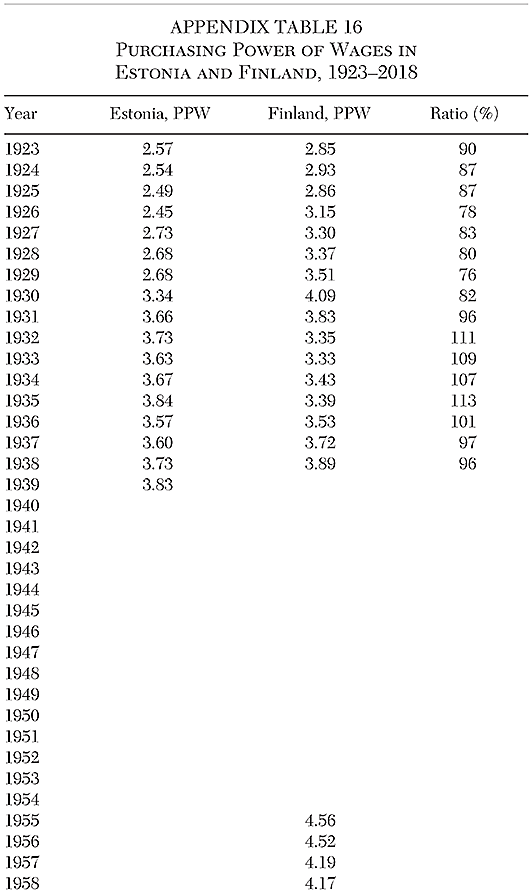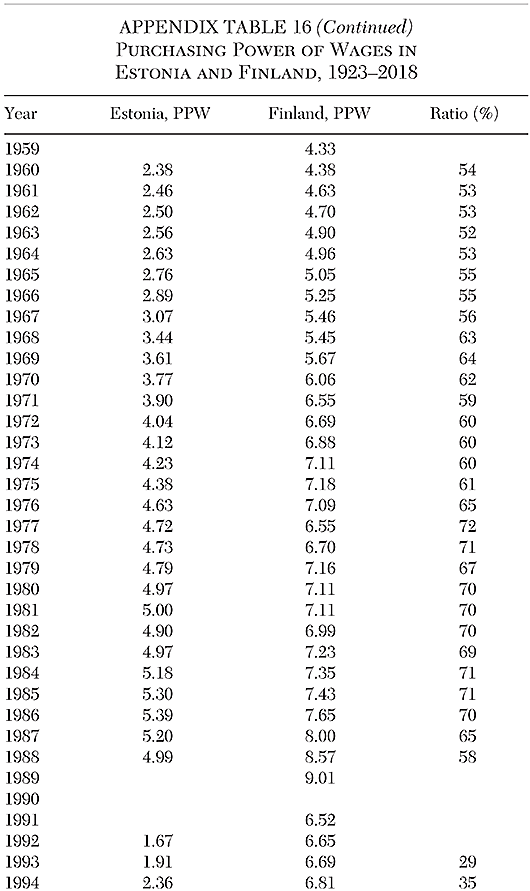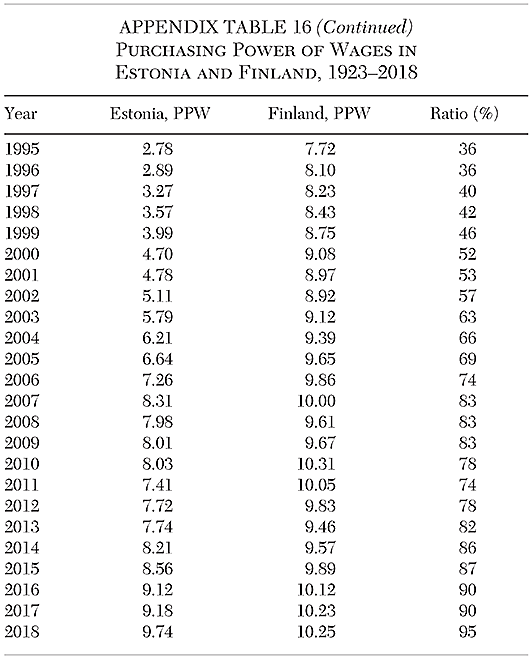Aavik, M. (2015) “Mis on Põhjamaade edu saladus?” Postimees Arvamus (June 12).
Ahvenainen, J. (2011) “The Competitive Position of the Finnish Sawmill Industry in the 1920s and 1930s.” Scandinavian Economic History Review 33 (3): 173–92.
Bremmer, I. (2006) The J Curve: A New Way to Understand Why Nations Rise and Fall. New York: Simon & Schuster.
Central Statistical Agency (1938) Statistical Yearbook of Finland 1938. New Series 36. Helsinki: Valtioneuvoston kirjapaino.
________ (1939) Statistical Yearbook of Finland 1939. Vol. 85. Helsinki: Valtioneuvoston kirjapaino.
________ (1990) Statistical Yearbook of Finland 1990. Vol. 90. Helsinki: Valtioneuvoston kirjapaino.
Ellman, M. (2000) “The 1947 Soviet Famine and the Entitlement Approach to Famines.” Cambridge Journal of Economics 24 (5): 603–30.
Estonian Institute of Economic Research (2018) “Average Retail Prices of Groceries in Estonian Stores.” Available at www.ki.ee/index.html.
Hagfors, R., and Kuus, T. (1993) “Income: Structure and Distribution.” In Lugus and Vartia (eds.), Estonia and Finland: A Retrospective Socioeconomic Comparison, 302–30. Research Institute of the Finnish Economy (ETLA), Series B, No. 86. Helsinki: ETLA.
Ilves, T. H. (1999) “Estonia as a Nordic Country.” Minister of Foreign Affairs, to the Swedish Institute for International Affairs (December 14). Available at https://vm.ee/et/uudised/valisminister-ilvese-loeng-rootsi-valispoliitika-instituudis-eesti-kui-pohjamaa-inglise.
Jörgensen, H. (2006) “The Interwar Land Reforms in Estonia, Finland, and Bulgaria: A Comparative Study.” Scandinavian Economic History Review 54 (1): 64–97.
Korpelainen, L. (1957) “Trends and Cyclical Movements in Industrial Employment in Finland, 1885–1952.” Scandinavian Economic History Review 5 (1): 26–48.
Laar, M. (2008) “Leading a Successful Transition: The Estonian Miracle.” European View 7 (1): 67–74.
Lapping, M. B. (1993) “The Land Reform in Independent Estonia: Memory as Precedent: Toward the Reconstruction of Agriculture in Eastern Europe.” Agric Hum Values 10: 52–59.
Lugus, O., and Vartia, P., eds. (1993) Estonia and Finland: A Retrospective Socioeconomic Comparison. Research Institute of the Finnish Economy (ETLA), Series B, No. 86. Helsinki: ETLA.
Mitchell B. R. (1975) European Historical Statistics, 1750–1970. London: Macmillan.
MONSTAT (Montenegro Statistical Office) (2018) “Methodological Guidelines: Minimal Consumer Basket.” Podgorica, Montenegro.
National Bureau of Statistics (1937) Monthly Estonian Statistics 182 (1) and 186 (5). Tallinn: Olion.
________ (1938) Monthly Estonian Statistics 193 (12) and 198 (5). Tallinn: Olion.
________ (1939) Monthly Estonian Statistics 217 (12). Tallinn: Olion.
________ (1940) Monthly Estonian Statistics 223 (6). Tallinn: Olion.
Nordic Council of Ministers and the Nordic Statistical Secretariat (1991) Yearbook of Nordic Statistics 1991. Vol. 29. Stockholm: Norstedts Tryckeri.
Nordic Estonia. “Estonia as a Nordic Country That Got Occupied by USSR.” Available at www.nordicestonia.com/nordic/introduction.
OECD.Data. “Prices: Inflation (CPI).” Available at https://data.oecd.org/price/inflation-cpi.htm.
OECD.Stat. “Databases: Labour: Earnings: Average Annual Wages: Estonia, Finland.” Available at https://stats.oecd.org/Index.aspx?DataSetCode=AV_AN_WAGE#.
Raun, T. (1987) “Finland and Estonia: Cultural and Political Relations, 1917–1940.” Journal of Baltic Studies 18 (1): 5–20.
Russian Federation Labour Code (2012) “On the Consumer Basket in General in the Russian Federation Act, Article 2. N227-FL.” Available at https://legalacts.ru/doc/federalnyi-zakon-ot-03122012-n-227-fz‑0.
State Statistical Committee of the Estonian SSR (1968) National Economy of the Estonian SSR in 1967. Statistical Yearbook 1967. Tallinn: Olion.
________(1976) National Economy of the Estonian SSR in 1975. Statistical Yearbook 1976. Tallinn: Olion.
________(1977) National Economy of the Estonian SSR in 1976. Statistical Yearbook 1977. Tallinn: Olion.
________(1980)National Economy of the Estonian SSR in 1979. Statistical Yearbook 1980. Tallinn: Olion.
________(1988) National Economy of the Estonian SSR in 1987. Statistical Yearbook 1988. Tallinn: Olion.
________(1989) National Economy of the Estonian SSR in 1988. Statistical Yearbook 1989. Tallinn: Olion.
Vattula K. (1983) Economic History of Finland, Vol. 3: Historical Statistics. Helsinki: Tammi.
